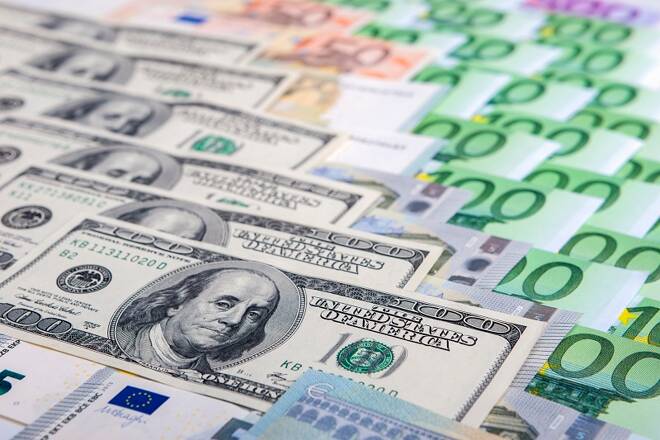Advertisement
Advertisement
Euro Sinks Under 1.1000, Aiming Lower
Published: Feb 11, 2020, 09:09 UTC
As the rate of growth of new coronavirus infections drops, demand for risk returns to the markets.
However, it is not equal across all regions. The three major American indices – Dow Jones, S&P500, Nasdaq – rushed to new heights, pulling the EuroStoxx50.
Still, there are significant differences between the growth of European and American indices in the form of dynamics of local currencies. U.S. markets are moving upwards amid positive macroeconomic data. At the same time, the effect of previous actions of the Fed has not yet fully reached the economy, tuning investors for even more significant improvement in the coming months.
A different story in Europe. Industrial production reports published since the last week in Germany, France, and Italy showed a decline of 6.8%, 2.8% and 4.3% YoY, respectively. Germany factory orders dropped 8.7% YoY, the lowest since 2009, becomes a further worrying indicator.
Adding to the pessimism, is that all these reports refer to December, long before the coronavirus problem appeared on investors’ radars. Therefore, these data, often having a very short-term effect on the euro rate, this time launched a sale of the single currency from levels, where it previously got support. Very cheerful American statistics confirmed the contrast in these regions, opening the way for EURUSD to decline from psychologically important level 1.10.
Strictly speaking, the pair declined under this level on Thursday but traded close to this line, pulled away only on Friday and developed decline on Monday to 1.0900 area by Tuesday morning.
The nearest support level may be the area 1.0880, where the Euro pushed off in early October. However, Germany is also a major exporter to China and not just an importer. Therefore, its growth rate may suffer much more than the U.S.A. in the coming months, requiring more stimulus accordingly.
The difference in the current figures of the nearest forecasts explains the significant pressure on EURUSD, opening the way to the further decline of the pair to 1.0750 by the end of the month. This decline fits into the general pair’s downtrend, formed in 2018 with the first volleys of the trade wars. But the coronavirus outbreak may become the factor that would accelerate the decline of EURUSD to 1.05 area or even lower before the 1Q20 end.
If by the middle of the year, the U.S. keeps healthy growth rates, while Europe and China continue to suffer, it is reasonable to expect EURUSD to decline close to parity by the third quarter.
This article was written by FxPro
About the Author
Alexander Kuptsikevichcontributor
Alexander is engaged in the analysis of the currency market, the world economy, gold and oil for more than 10 years. He gives commentaries to leading socio-political and economic magazines, gives interviews for radio and television, and publishes his own researches.
Did you find this article useful?
Latest news and analysis
Advertisement
